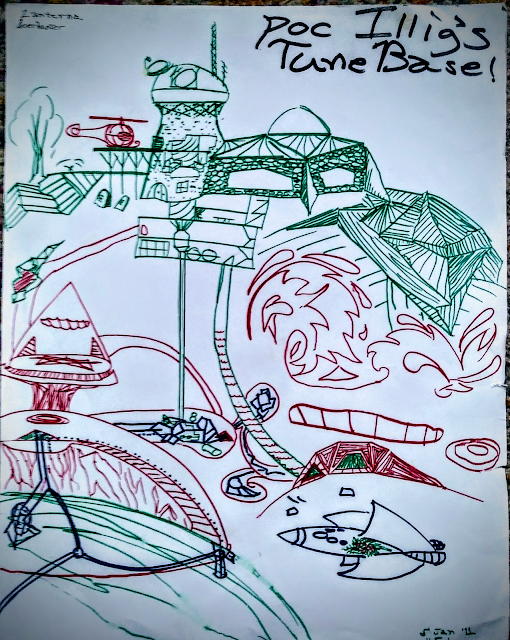Manticore Lore
manticore (n.)
fabulous monster mentioned by Ctesias with the body of a lion, head of a man, porcupine quills, and tail or sting of a scorpion, c. 1300, from Latin manticora, from Greek mantikhoras, corruption of martikhoras, perhaps from Iranian compound *mar-tiya-khvara "man-eater."
The first element is represented by Old Persian maritya- "man," from PIE *mar-t-yo-, from *mer- "to die," thus "mortal, human;" from PIE root *mer- "to rub away, harm" (also "to die" and forming words referring to death and to beings subject to death). The second element is represented by Old Persian kvar- "to eat," from PIE root *swel- (1) "to eat, drink" (see swallow (v.)).
(Early Middle Persian Merthykhuwar; Modern Persian Mardykhor)
"man-eater" (from early Middle Persian مارتیا mardya "man" (as in human) and خوار khowr- "to eat"). E "manticore" < L. mantichora < G. μαρτιχώρα, martichora. It passed into European folklore first through a remark in INDIKA, Ctesias, physician at the Persian court of King Artaxerxes II (4th BC) circulated among Greek writers on natural history but has survived only in fragments, or references by those other writers. The Romanised Greek Pausanias, in his Description of Greece:
the beast described by Ctesias in his Indian history, which he says is called martichoras by the Indians and "man-eater" [androphagos] by the Greeks, I am inclined to think is the tiger. But that it has three rows of teeth along each jaw and spikes at the tip of its tail with which it defends itself at close quarters, while it hurls them like an archer's arrows at more distant enemies; all this is, I think, a false story that the Indians pass on from one to another owing to their excessive dread of the beast.
The tiger is the swiftest beast in flight, as it were an arrow, for the Persees call an arrow Tigris, and is a beast distinguished with divers specks, and is wonderly strong and swift. And Pliny saith that they be beasts of dreadful swiftness, and that is namely known when he is taken, for the whelp is all glimy and sinewy; and the hunter lieth in await, and taketh away the whelps, and fleeth soon away on the most swift horse that he may have. And when the wild beast cometh and findeth the den void, and the whelps away, then he reseth headlong, and taketh the fore of him that beareth the whelps away, and followeth him by smell, and when the hunter heareth the grutching of that beast that runneth after him, he throweth down one of the whelps; and the mother taketh the whelp in her mouth, and beareth him into her den and layeth him therein, and runneth again after the hunter. But in the meantime the hunter taketh a ship, and hath with him the other whelps, and scapeth in that wise; and so she is beguiled and her fierceness standeth in no stead, and the male taketh no wood rese after. For the male recketh not of the whelps, and he that will bear away the whelps, leaveth in the way great mirrors, and the mother followeth and findeth the mirrors in the way, and looketh on them and seeth her own shadow and image therein, and weeneth that she seeth her children therein, and is long occupied therefore to deliver her children out of the glass, and so the hunter hath time and space for to scape, and so she is beguiled with her own shadow, and she followeth no farther after the hunter to deliver her children.


Comments
Post a Comment